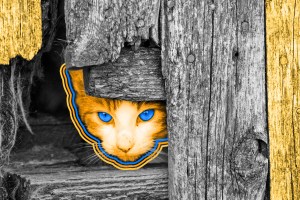
Numbers Don't Lie

Seeing a pattern in an otherwise random image, like a man in the moon, is called ______.

Ready to reveal?
Confirm your email to play the next question?

Seeing a pattern in an otherwise random image, like a man in the moon, is called pareidolia.

One of the first mainstream pregnancy tests used live frogs.
In sub-Saharan Africa there lives an abundant amphibian called the African clawed frog, or Xenopus laevis. It looks like other frogs, but the females have a special ability — when injected with certain hormones, they begin laying eggs within 12 hours. This strange power was discovered by British zoologist Lancelot Hogben in 1930. Once he witnessed the egg-laying results while experimenting with ox hormones, Hogben wondered if the frogs would lay eggs if injected with urine containing similar hormones from pregnant women. The results were surprisingly reliable, and between the 1940s and 1960s, tens of thousands of Xenopus frogs were injected with urine sent by doctors to special frog labs. The “Hogben test” made pregnancy testing much faster and more widely available than it had been previously; the tests didn’t kill the frogs, so labs could keep colonies on hand and reuse them. In the 1970s, Xenopus laevis was replaced by at-home tests that directly detected the hormone chorionic gonadotropin (hCG), a telltale sign of pregnancy and the same hormone that caused the frogs to ovulate. But the African clawed frog’s career in the sciences wasn’t over, for better or for worse. With large populations of the animals already available for research, they ended up contributing in other fields: The first animal gene ever cloned belonged to a Xenopus, and four even took a ride on the space shuttle Endeavour in 1992, which tested the frogs’ ability to reproduce in space. (They did just fine.)
















